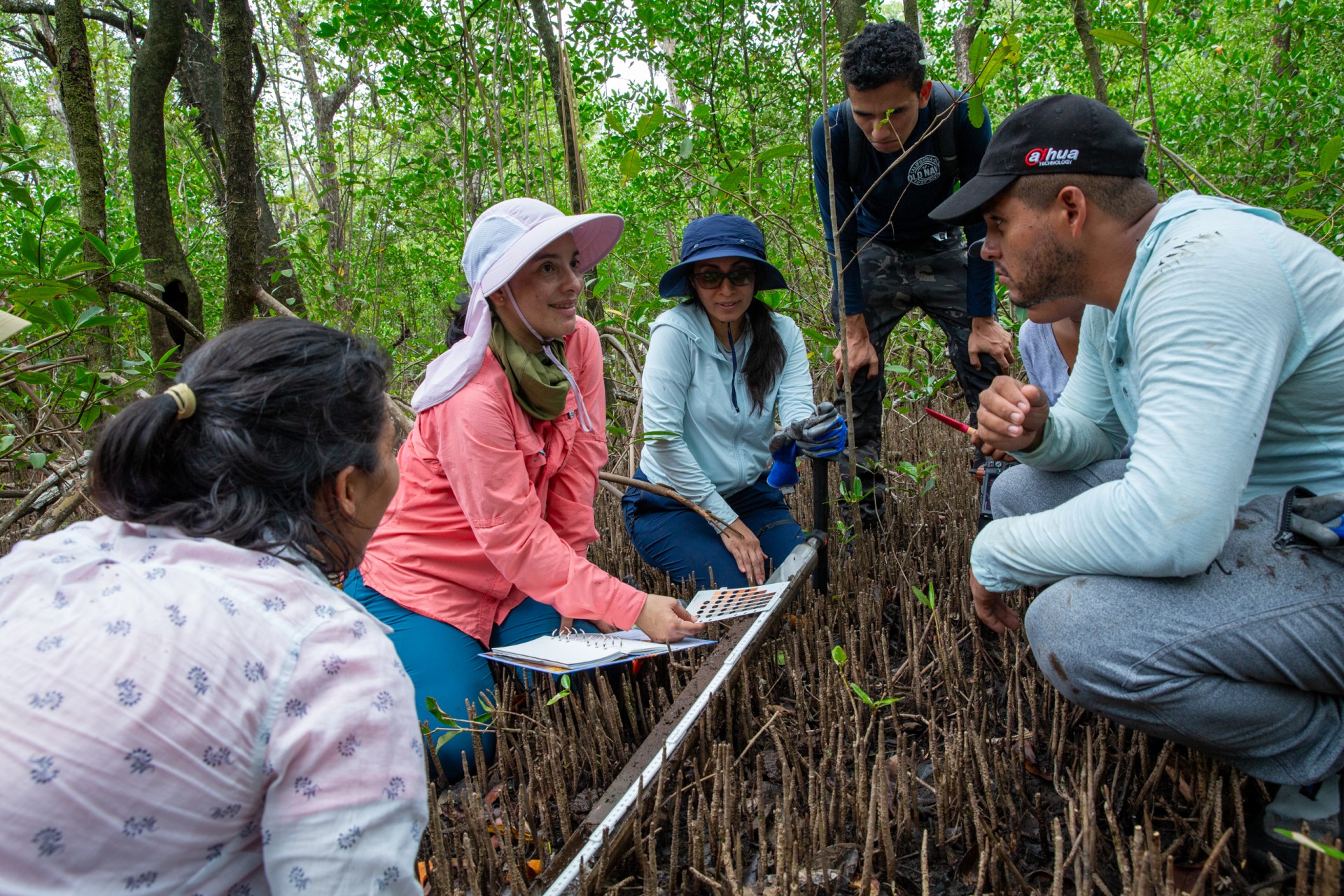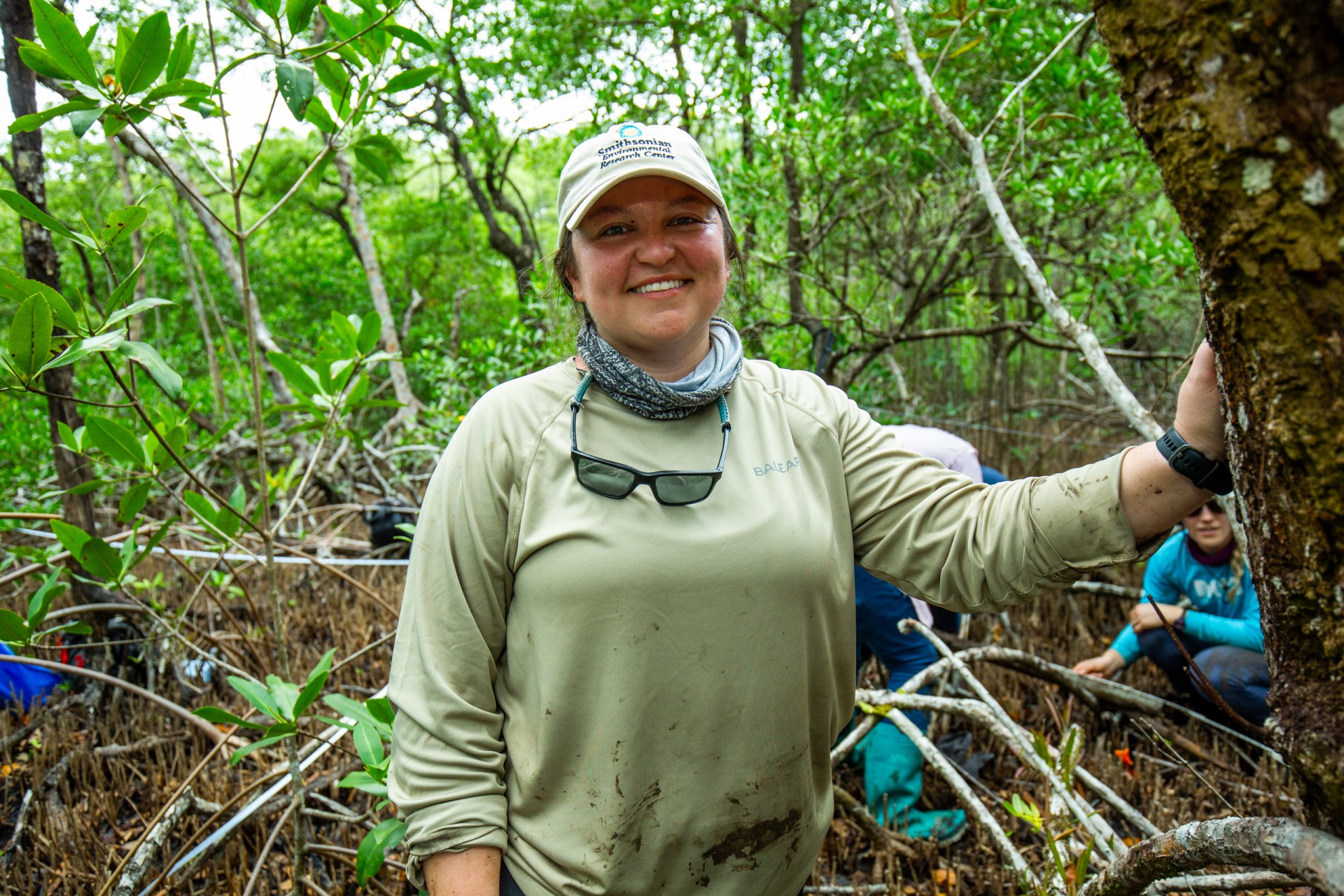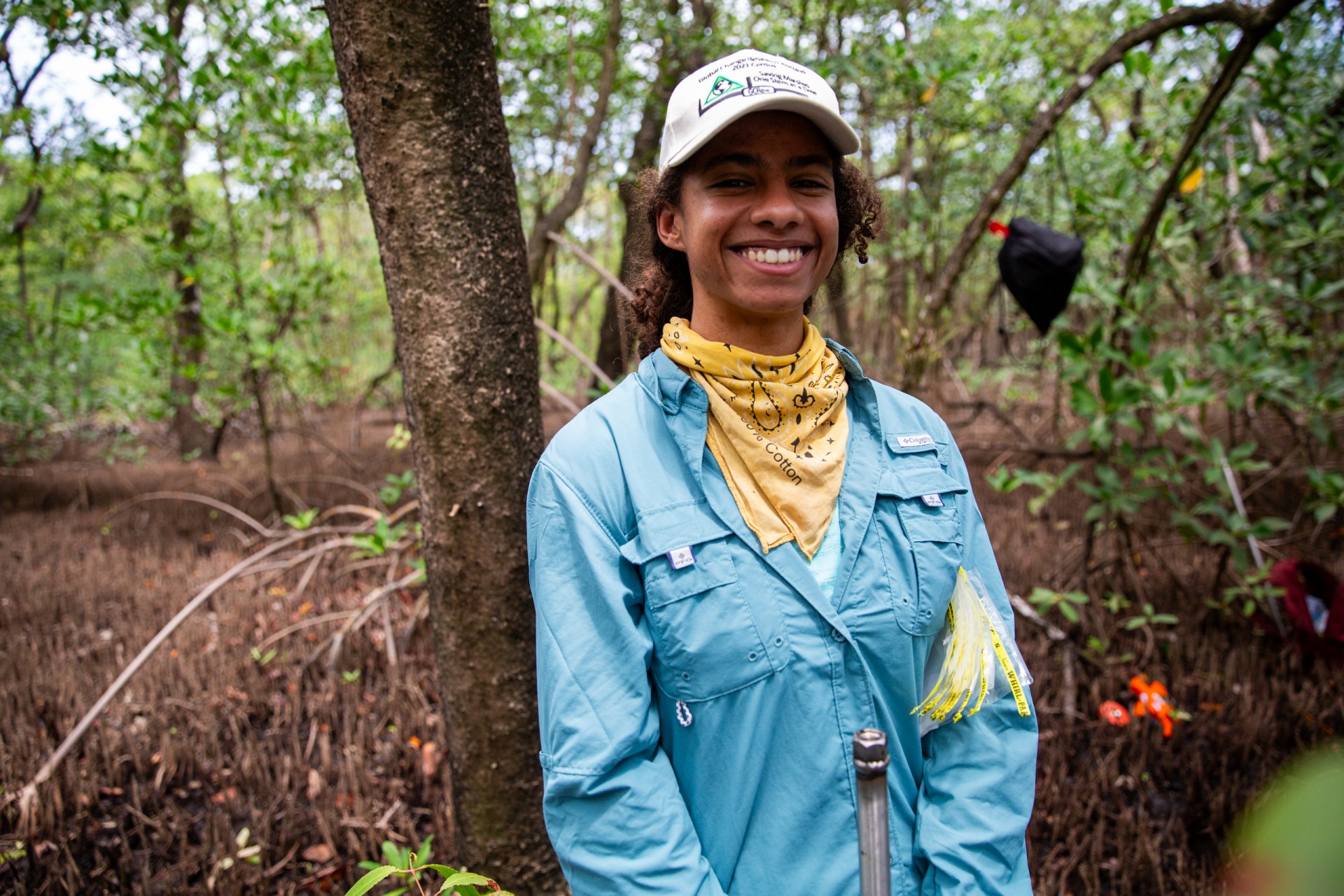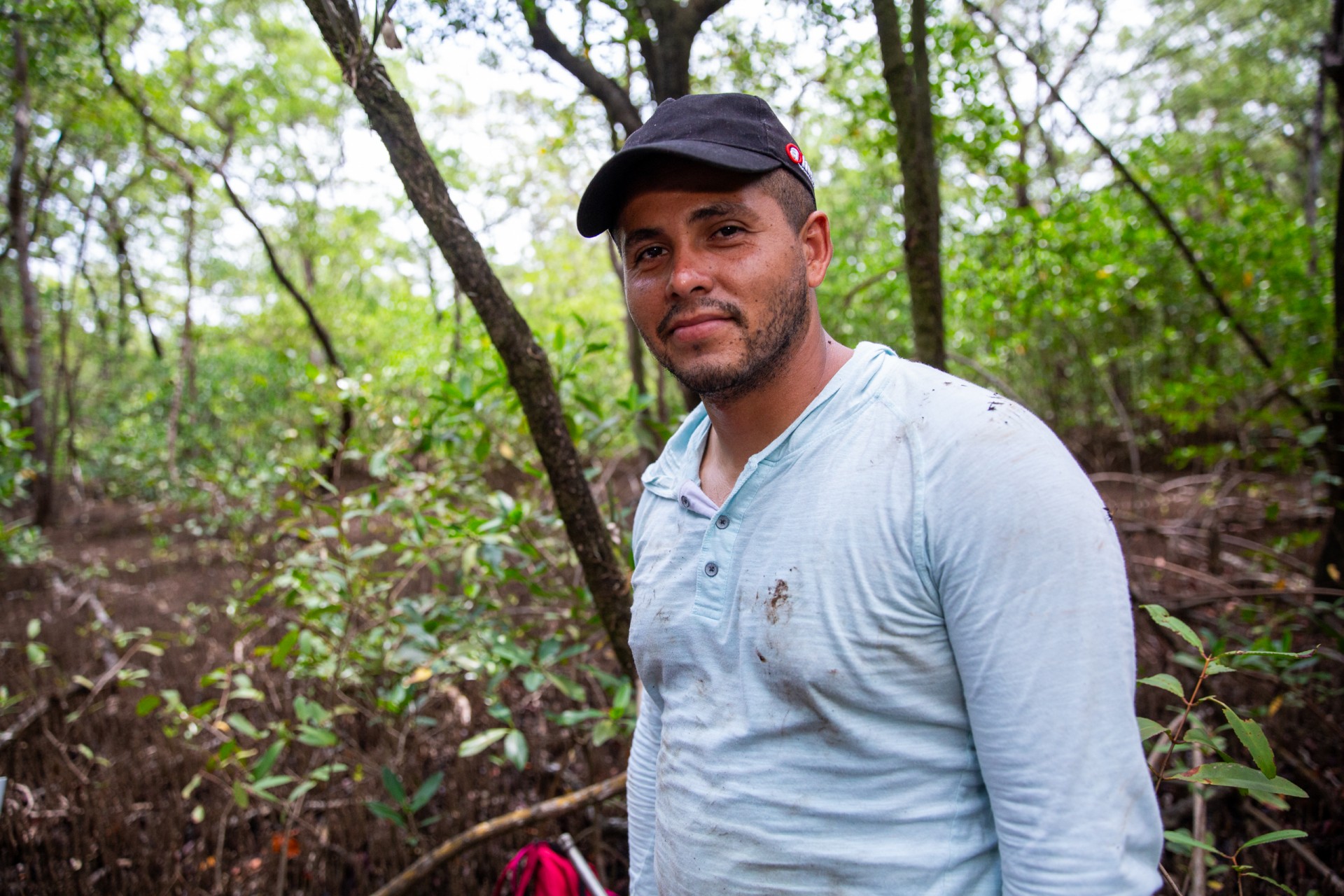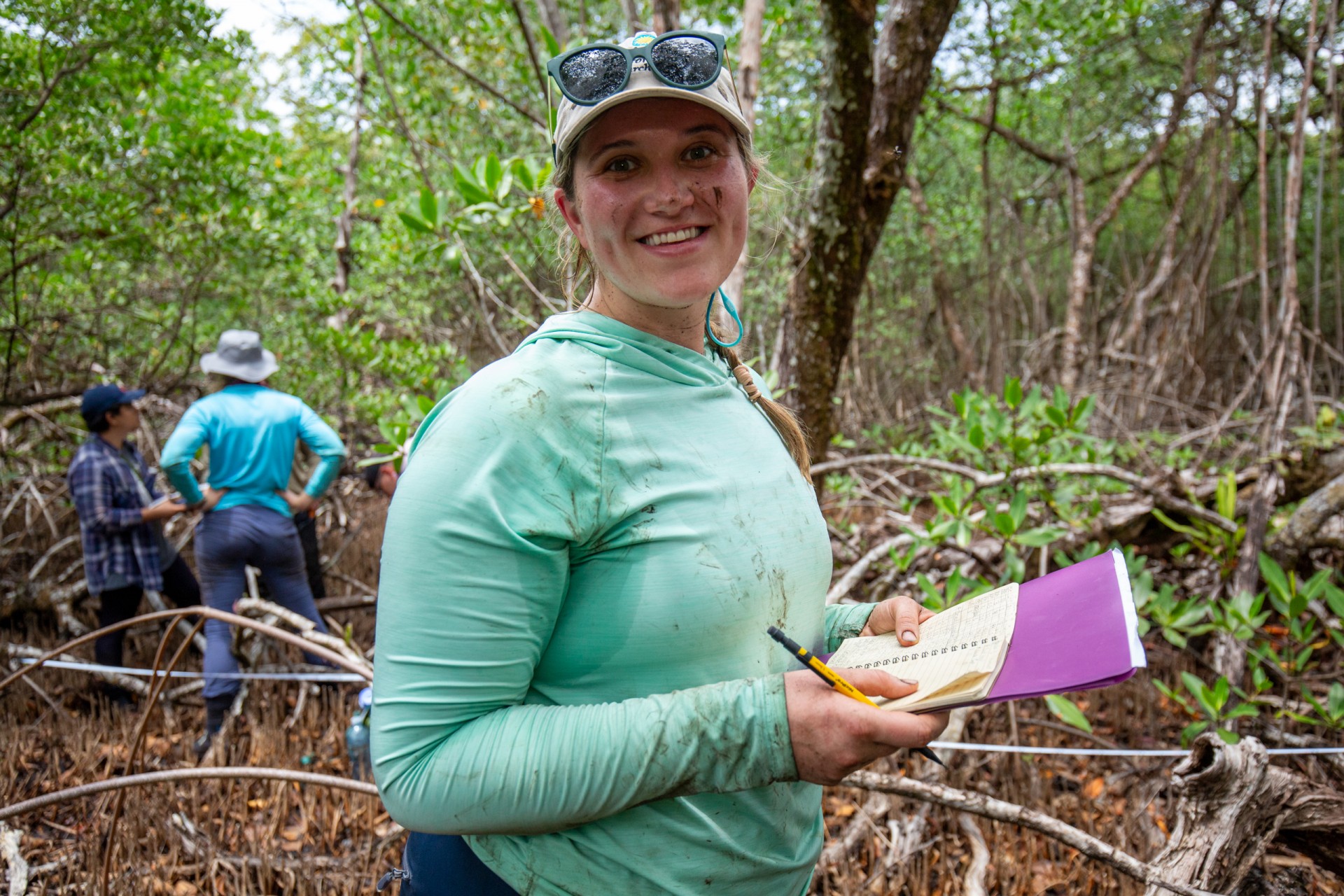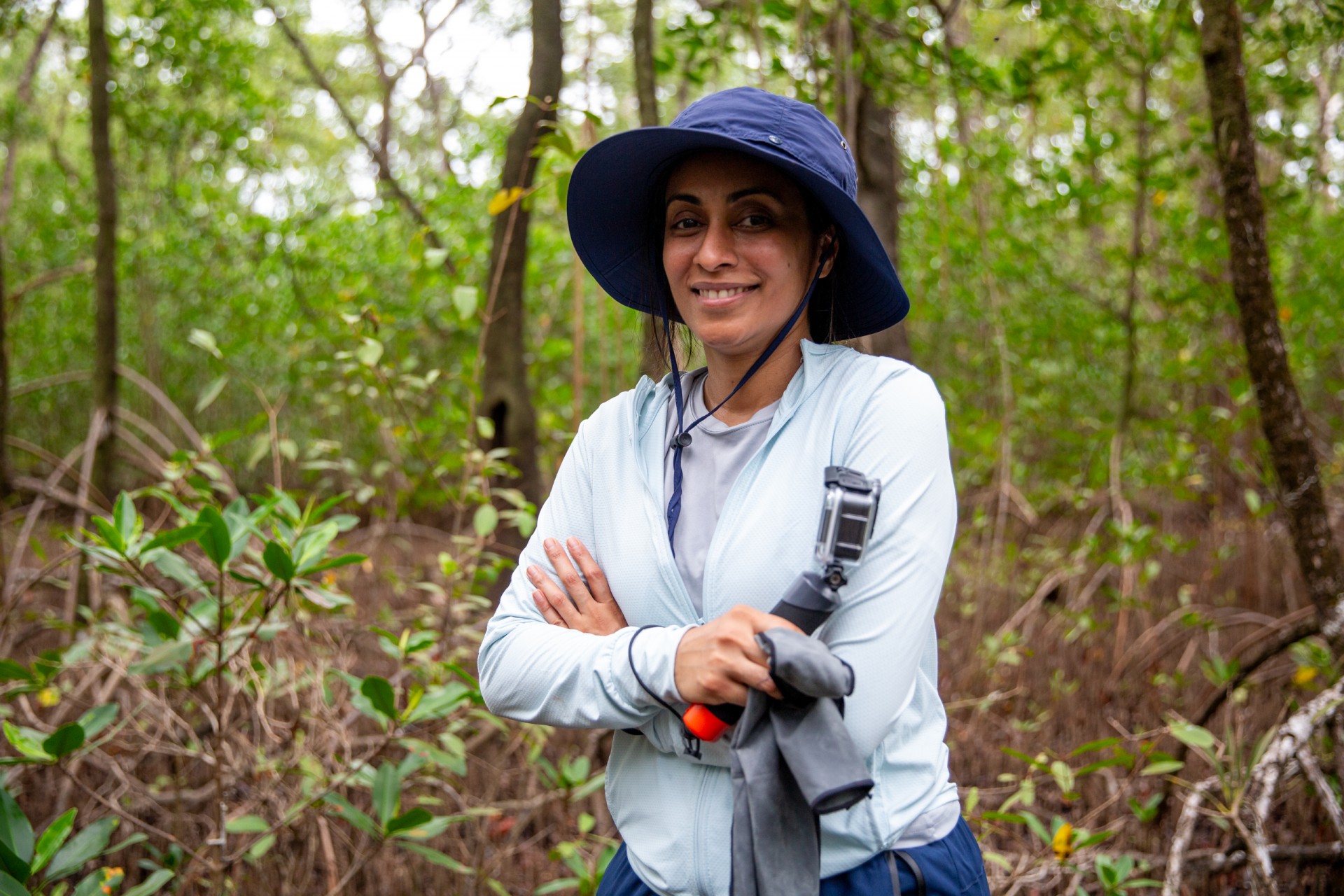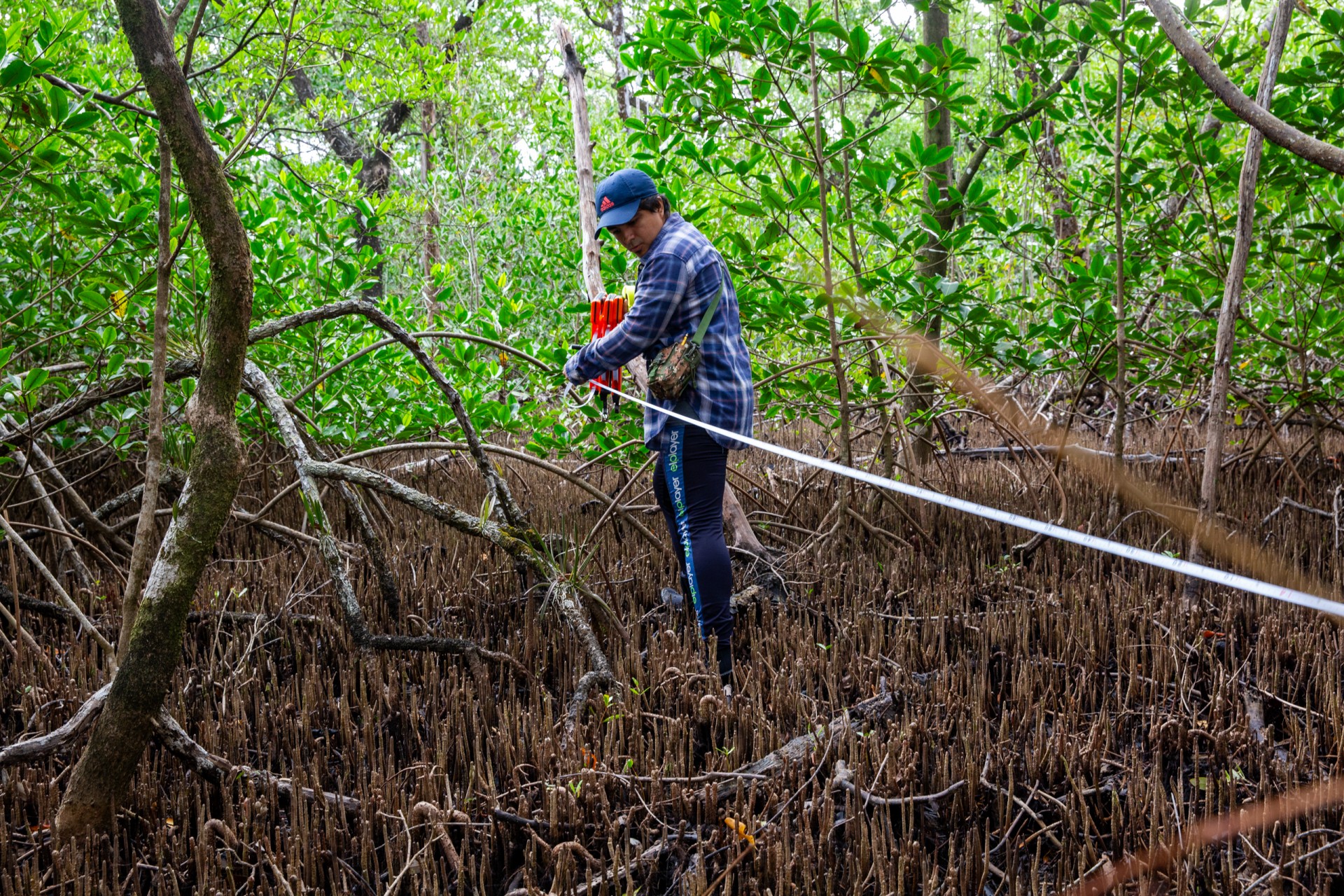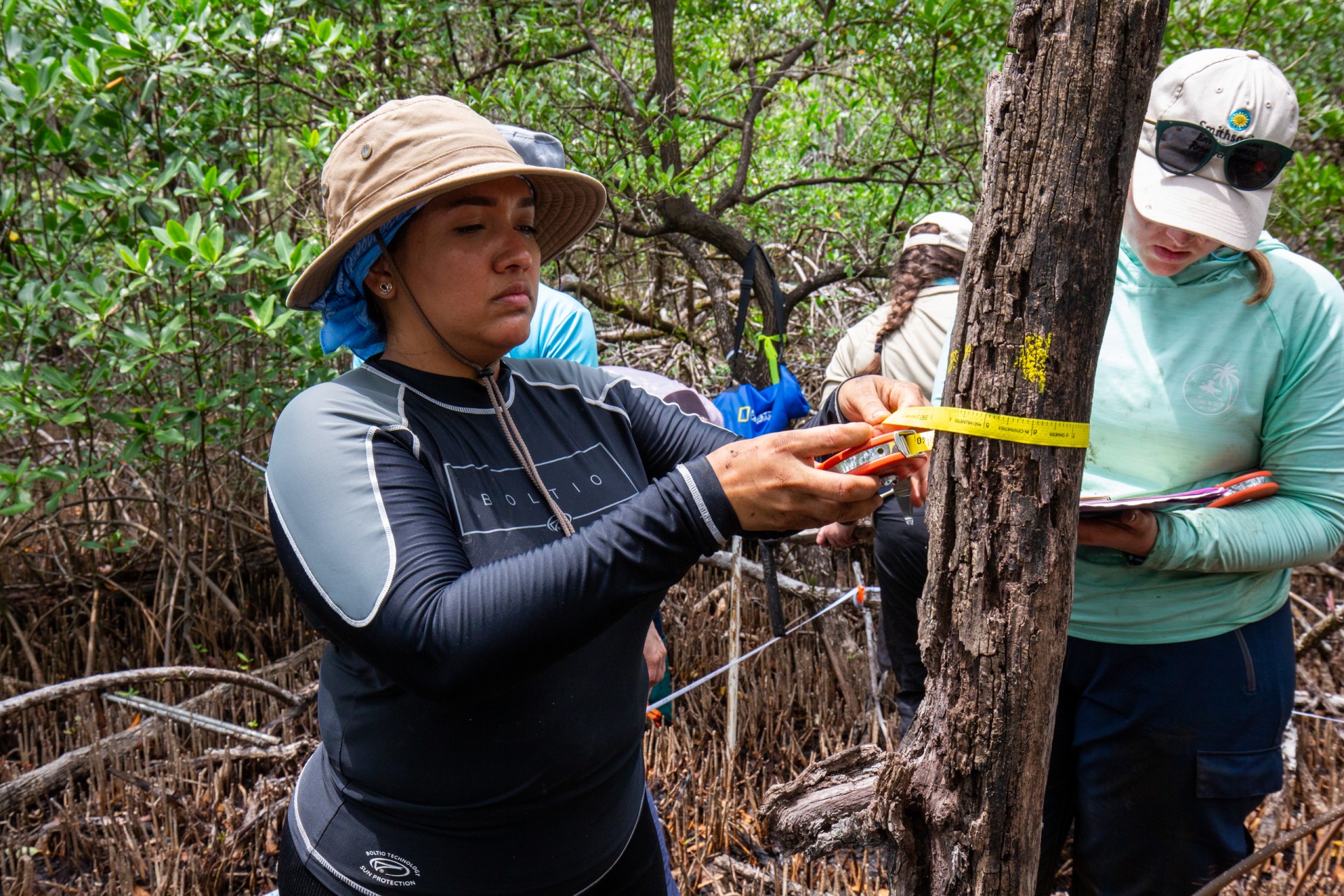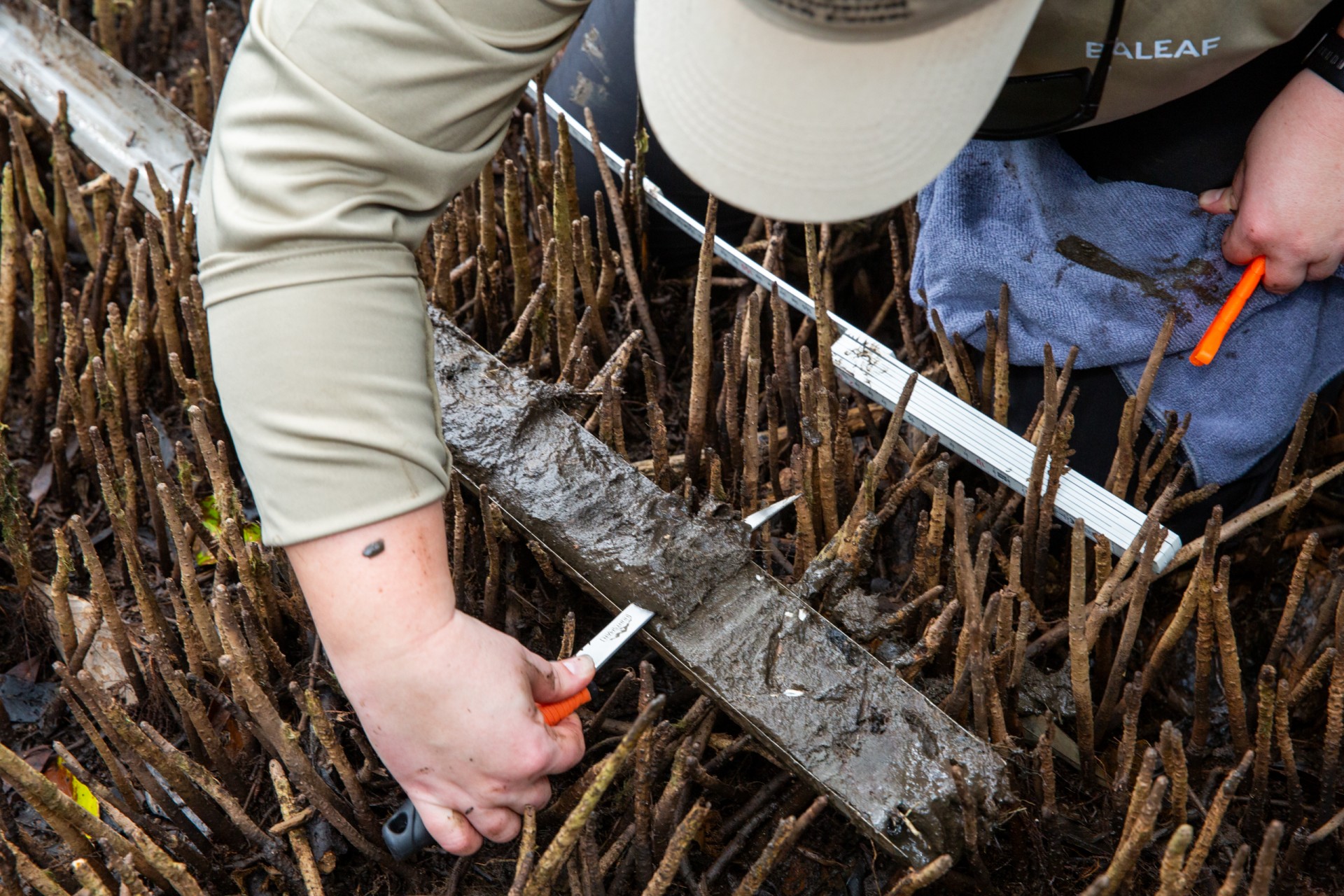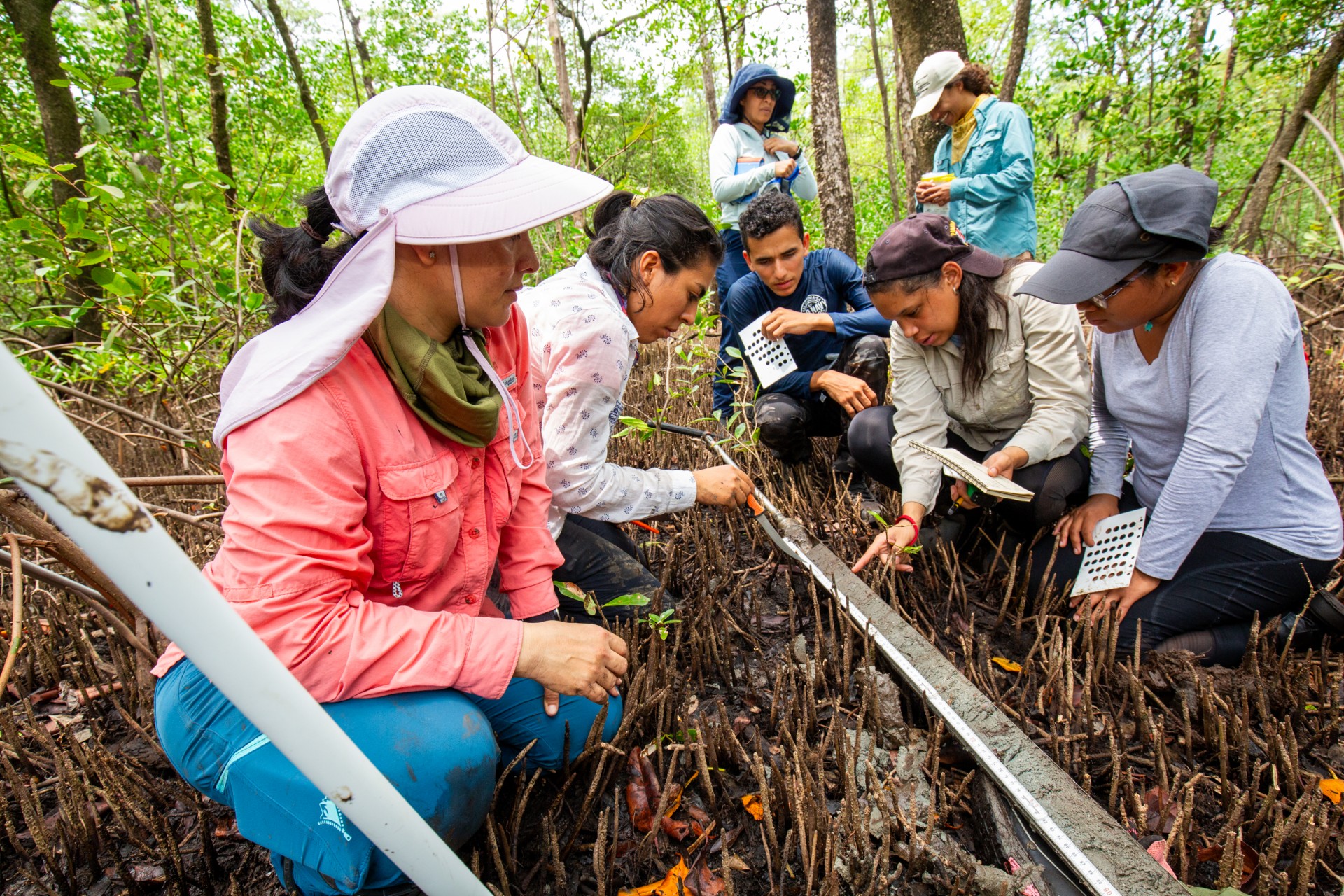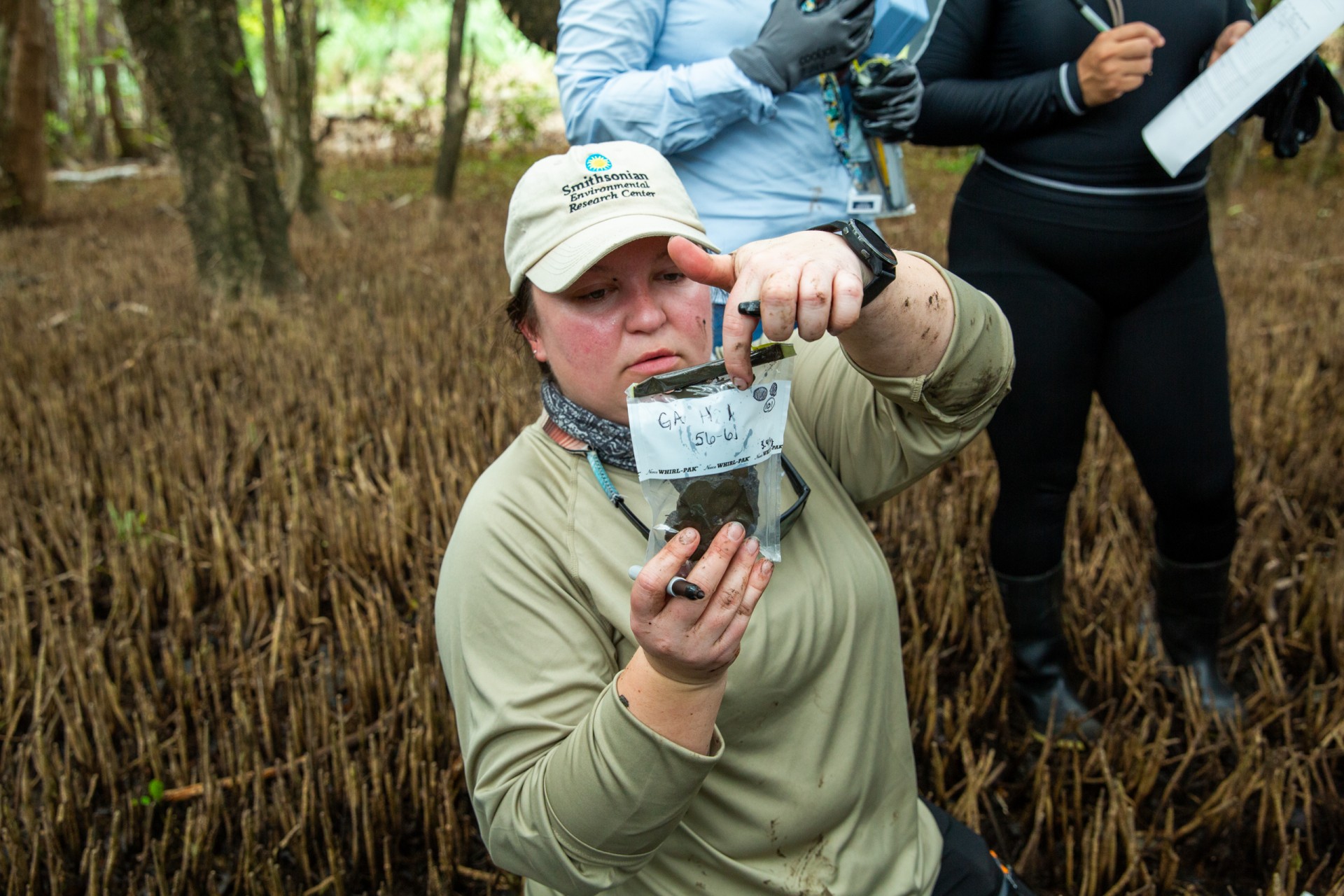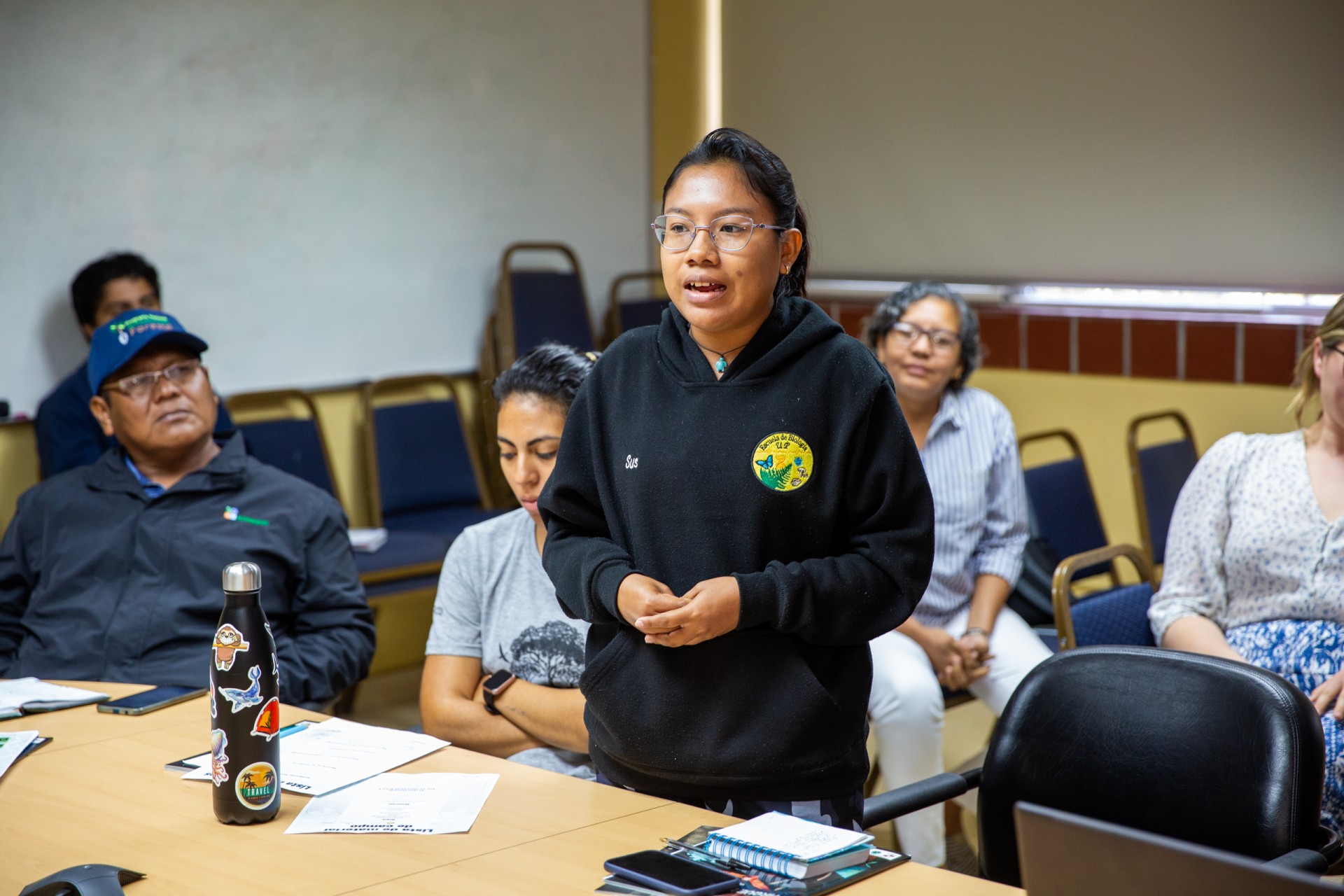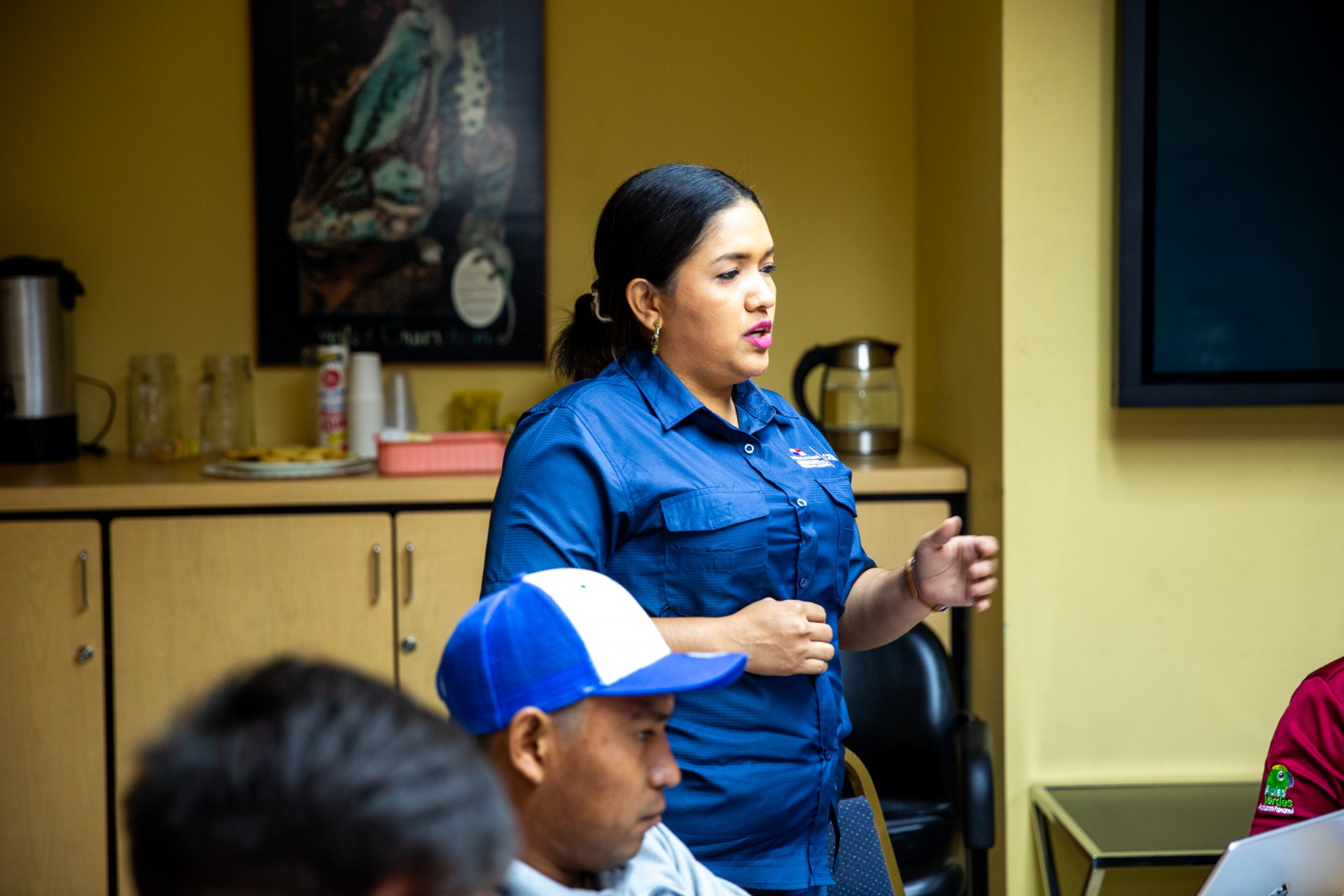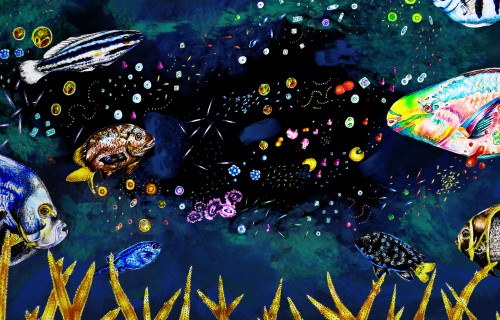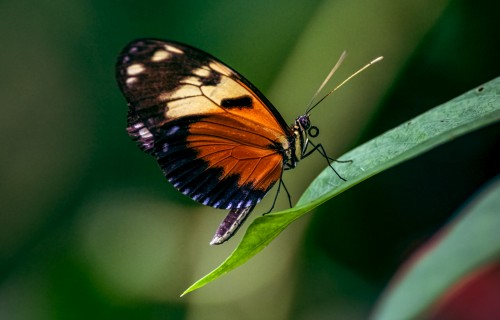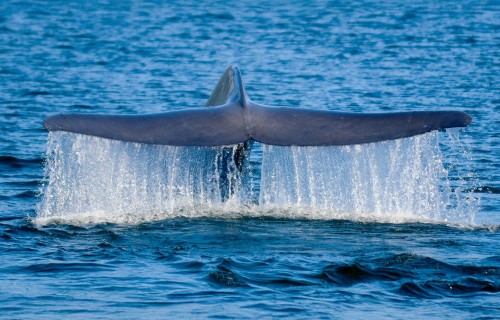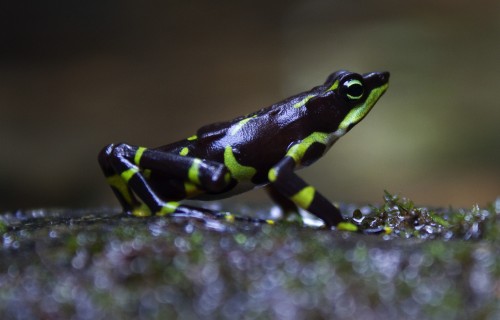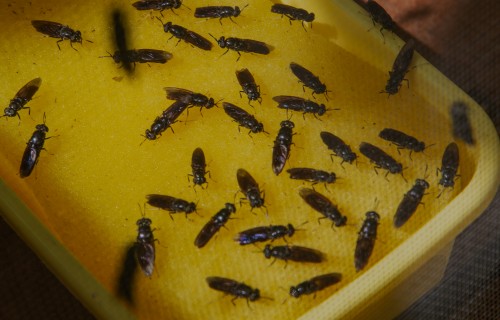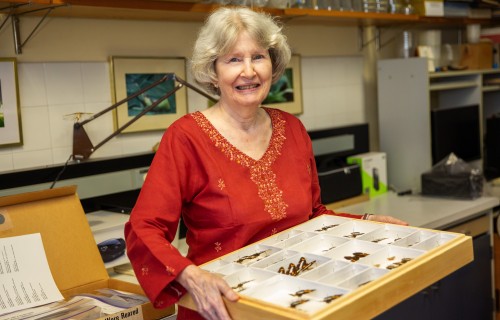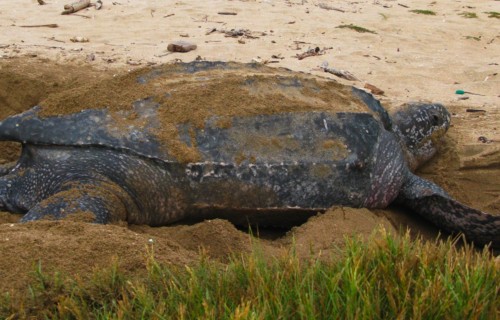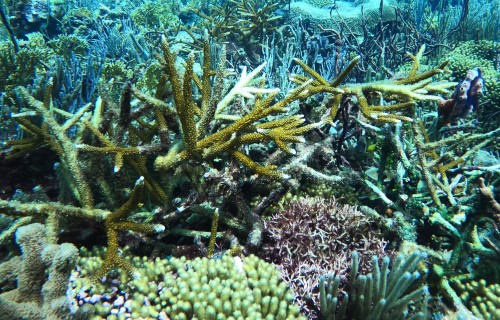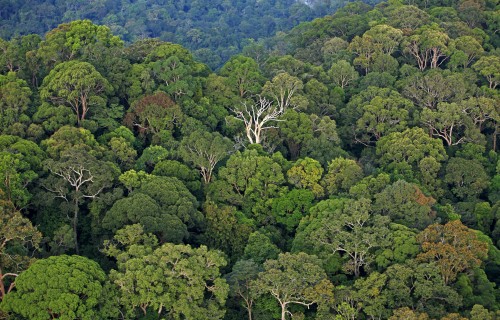Above the tropical forest canopy,
sensors capture the fluxes of gases
between the trees and the atmosphere
Measuring
mangroves
Understanding Panama’s blue carbon stock
Story by Fleur Cartwright and Olivia Milloway
Smithsonian researchers collaborated with stakeholders to share mangrove carbon accounting techniques and learn about their importance in mitigating climate change.
With nearly two dozen people in tow, Tania Romero – one of Panama’s leading Blue Carbon experts and the Collin Lab manager at the Smithsonian Tropical Research Institute (STRI) – expertly navigated the twists and turns of a coastal mangrove swamp. Mangroves, which thrive at the border between land and sea, provide coastal protection, nurseries for marine life, and food for coastal communities. A lesser-known benefit of mangroves brought Romero to the coast: their role as blue carbon warehouses.
The term “blue carbon” refers to the carbon stored in marine ecosystems like sea grasses, salt marshes, and mangroves. Through photosynthesis, plants absorb carbon dioxide from the atmosphere and sequester it in their roots, leaves, and specifically their sediments, helping to slow climate change. While terrestrial forests also store carbon (aptly called “green carbon”), carbon sequestration rates are significantly higher in blue carbon ecosystems; within their biomass and soils, tropical mangrove forests can store up to 4 times more carbon than their terrestrial counterparts.
With Atlantic and Pacific coasts lined with twelve different species, Panama is home to the most extensive mangrove forests in Central America. The carbon sequestration power of Panama’s mangroves will be important for the country to reach its emission goals outlined in the 2015 Paris Climate Accords, says Romero. “We need to put Panama in the global spotlight to maintain our status as a zero-emission country,” she said. But this carbon must be accurately measured, and blue carbon accounting in mangrove forests is not yet widely practiced and standardized across the country. To share blue carbon measuring techniques and best practices, Romero teamed up with Hannah Morrissette, a coastal wetland biogeochemist at the Smithsonian Environmental Research Center (SERC) in Edgewater, Maryland, to host a blue carbon technical workshop. With funding from The Pew Charitable Trusts, participants from across diverse sectors were invited, including Panama’s environmental ministry (MiAmbiente), conservation groups (Audubon Panama, Panamanglar, Asociación Nuevo Manglar, tourism (ChameXplora), fisheries (Cooperativa de Pescadores Artesanales), research (CCIMBIO-Coiba), and indigenous groups (Congreso General Guna). “We’re thrilled by the enthusiastic response of so many stakeholder groups”, said STRI scientist Rachel Collin, a co-principal investigator on the project. “It’s been fantastic working together across so many sectors.”
Mangrove fieldwork is not for the faint-hearted. Romero instructed participants to bring rubber boots, long-sleeved shirts, and bug spray, and to stay hydrated in the field. “The conditions are challenging,” stressed Romero, who has been navigating mangroves’ tangled root systems since her bachelor’s degree. She demonstrated how to measure aboveground biomass using typical forestry techniques, and belowground biomass using a core to extract columns of mud. These cores are then dried for a week in the lab before being burned to reveal their blue carbon value.
Romero noted that many Panamanians living in coastal areas already have a first-hand understanding of the importance of mangrove health. “There’s a community response every time the mangroves are impacted by construction, garbage, or die offs,” she said. However, many people still burn charcoal made from mangroves, without realizing the effect it has on blue carbon storage.
Susania Avila, a workshop participant, reflected, “The workshop gave me a deeper perspective on the importance of mangroves and their role in carbon sequestration … which has strengthened my appreciation for mangrove conservation.” Avila is a marine biology student at the University of Panama and member of the Congreso General Gúna. Though already well familiar with mangroves and the vital role they play in coastal systems, Avila said that the workshop’s combination of theory and field work reinforced “how the concept of blue carbon is closely related to the health and stability of coastal ecosystems.” The learning environment was just as impactful as the content itself: “The workshop encouraged collaboration and exchange of ideas among diverse participants, which further enriched the learning experience.”
Reference: Donato, D.C. et al. (2011) ‘Mangroves among the most carbon-rich forests in the Tropics’, Nature Geoscience, 4(5), pp. 293–297. doi:10.1038/ngeo1123.


